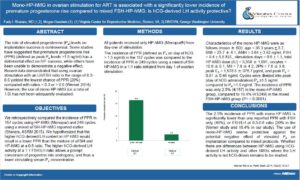Control/Tracking Number: 2016-A-1181-ASRM
Activity: Abstract
Current Date/Time: 5/24/2016 8:21:11 PM
 MONO-HP-HMG IN OVARIAN STIMULATION FOR ART IS ASSOCIATED
MONO-HP-HMG IN OVARIAN STIMULATION FOR ART IS ASSOCIATED
WITH A SIGNIFICANTLY LOWER INCIDENCE OF PREMATURE PROGESTERONE RISE COMPARED TO
MIXED FSH-HP-HMG: IS HCG-DERIVED LH ACTIVITY PROTECTIVE?
Author Block: F. Sharara,1,2 M. R. Goodwin1; 1Virginia Center for Reproductive Medicine, Reston, VA, 2Ob/gyn, George Washington University, Washington, DC
Abstract:
Objective: The role of elevated progesterone (P4) levels on implantation success is controversial. Some studies have suggested that premature progesterone rise (PPR) (defined as peak P4 levels >1.5 ng/ml) has a detrimental effect on IVF success, while others have been unable to demonstrate a negative effect. Recent data demonstrated that using ovarian stimulation with an LH/FSH ratio in the range of 0.3-0.6 yielded the lowest chance of PPR (20%) compared with ratios < 0.3 or > 0.6 (Warner 2014), however using mono-HP-hMG (i.e a ratio of 1.0) has not been previously evaluated. We also compared the incidence of PPR with 249 cycles using a mixed uFSH-HP-hMG at 0.5 ratio reported earlier (Sharara, ASRM 2015).
Design: Retrospective analysis
Materials and Methods: 157 cycles using mono-HP-hMG were evaluated. All patients received only HP-hMG (Menopur®) from day one of stimulation. > 90% of the LH activity in HP-hMG is HCG-derived. The incidence of PPR was compared to 249 cycles using a mixed uFSH-HP-hMG in a 1:1 ratio.
Results: Characteristics of the mono-HP-HMG were as follows (mean ± SD): age = 35.3 years + 3.7, BMI = 23.7 ± 4.1, AMH = 3.64 + 3.52 ng/ml, FSH = 8.4 + 5.5 IU/L, stimulation days = 9.5 + 1.1, total HP-hMG dose (IU) = 3,359 ± 1,091, oocytes = 10.6 ± 5.1, MII = 7.8 ± 4.2, 2PN = 7.0 ± 3.8, peak E2 = 1,578.5 ± 976.7 pg/ml, and peak P4 = 0.81 ± 0.46 ng/ml. Cycles were divided into peak (day of hCG administration) P4 ≤1.5 ng/ml compared to P4 >1.5 ng/ml. The incidence of PPR was only 2.5% (4/157) in the mono-HP-hMG group, compared to 16.4% (41/249) in the mixed FSH-HP-hMG group (P= < 0.0001).
Conclusions: The 2.5% incidence of PPR with mono-HP-hMG is significantly lower than any reported PPR with FSH only (40%) or FSH/LH at 0.3-0.6 ratio (20% in the Warner study and 16.4% in our study). The use of mono-HP-hMG seems protective against the potential negative effect of elevated P4 on implantation compared to mixed protocols. Whether there are differences between HP-hMG using HCG-derived LH activity and other hMGs where the LH activity is not HCG-driven remains to be studied.
Financial Support & References:
Financial Support: None
References: Warner MD, et al. Fertil Steril 102;5:1312-7, 2014; 2. Sharara FI. ASRM 2015
